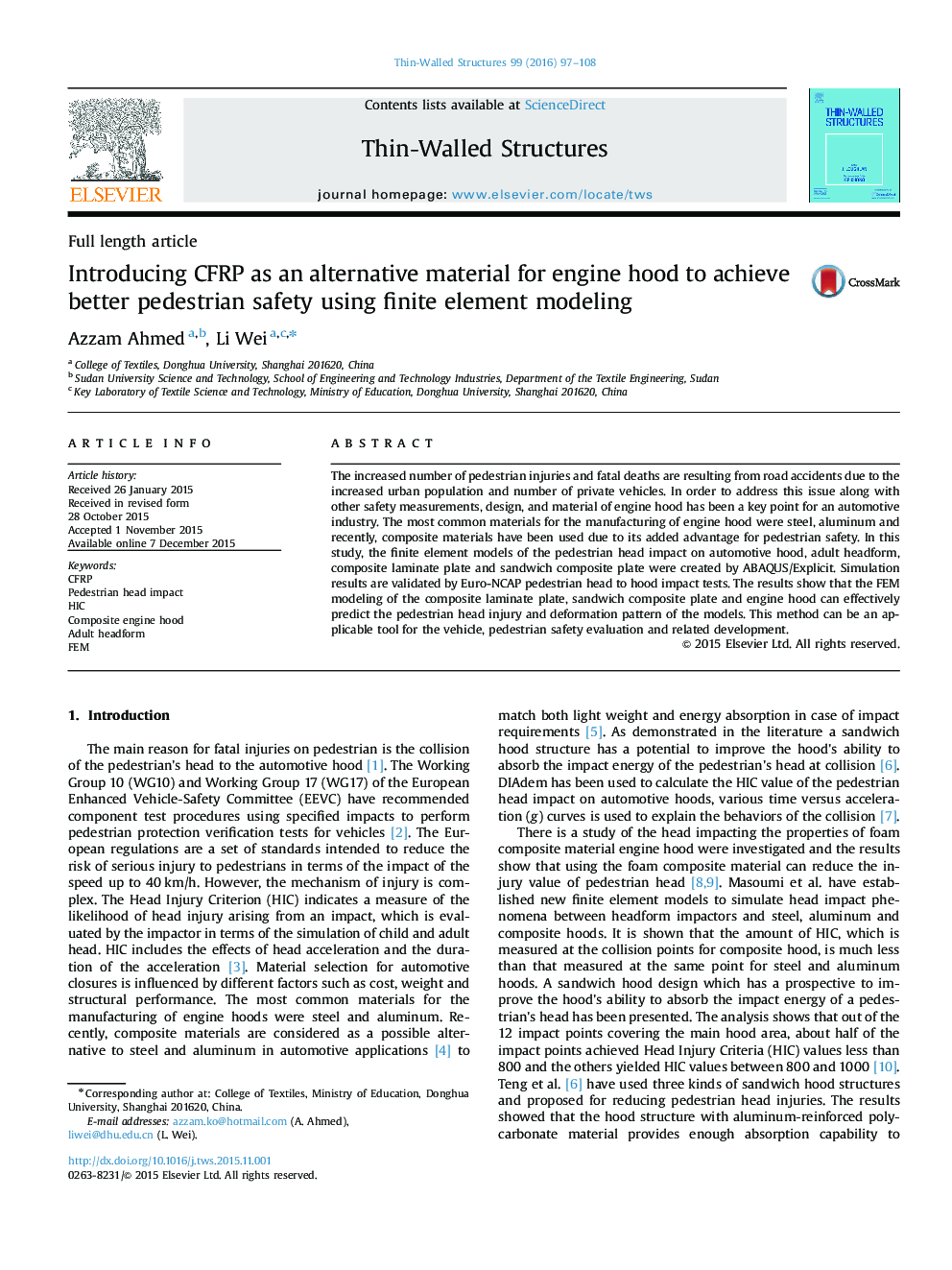| Article ID | Journal | Published Year | Pages | File Type |
|---|---|---|---|---|
| 308446 | Thin-Walled Structures | 2016 | 12 Pages |
•Finite element models of the pedestrian head impact on automotive hood, adult headform, composite laminate plate and sandwich composite plate were created by ABAQUS/Explicit.•A new approach of FE modeling of the CFRP engine hood with different structures was investigated.•The results show that the FEM modeling of the composite laminate plate, sandwich composite plate and engine hood can effectively predict the pedestrian head injury and deformation pattern of the models.
The increased number of pedestrian injuries and fatal deaths are resulting from road accidents due to the increased urban population and number of private vehicles. In order to address this issue along with other safety measurements, design, and material of engine hood has been a key point for an automotive industry. The most common materials for the manufacturing of engine hood were steel, aluminum and recently, composite materials have been used due to its added advantage for pedestrian safety. In this study, the finite element models of the pedestrian head impact on automotive hood, adult headform, composite laminate plate and sandwich composite plate were created by ABAQUS/Explicit. Simulation results are validated by Euro-NCAP pedestrian head to hood impact tests. The results show that the FEM modeling of the composite laminate plate, sandwich composite plate and engine hood can effectively predict the pedestrian head injury and deformation pattern of the models. This method can be an applicable tool for the vehicle, pedestrian safety evaluation and related development.
Graphical AbstractFigure optionsDownload full-size imageDownload as PowerPoint slide
